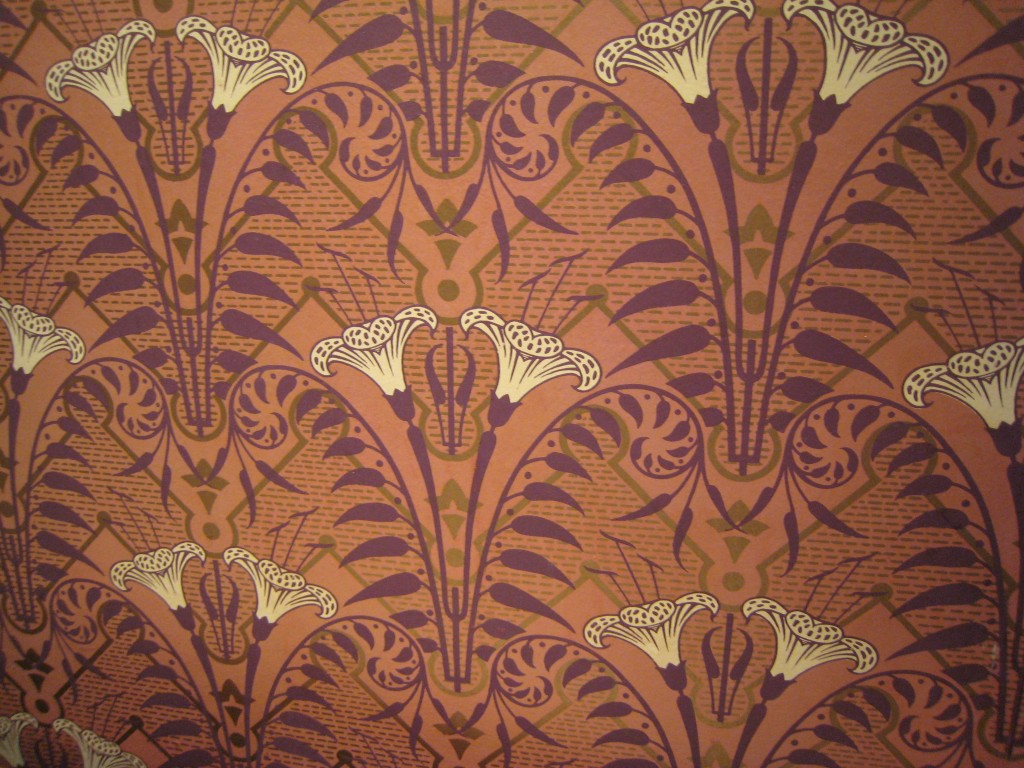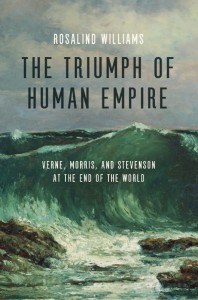Even people who have zero interest in general history can get intrigued by family history, or at least some branches thereof. My interest in family history, generally mild, recently got a boost because one of our graduate students, Rebecca Woods, is preparing to defend her doctoral dissertation on sheep-raising in New Zealand in the nineteenth-century (with the terrific title “The Herds Shot Round the World: Native Breeds and the British Empire, 1800-1900”).
I have an ancestor, from the Kenway side of my mother’s family, who left England in the late l9th century to raise sheep in New Zealand. I didn’t know anything more about him, however, so I asked my cousin Mary Emerson Smith for help. She reminded me that the name of this forefather is Philip T. Kenway and that he had written several books, some of which may be found in Widener Library at Harvard University. A few days later I had in my hands a 139-page memoir titled Quondam Quaker, published by Cornish Brothers Limited in Birmingham in 1947 when the writer was 86 years old. (The title means “former Quaker.” Kenway slowly but surely lost the family faith and formally renounced his affiliation with the Society of Quakers after he returned to England in middle age.)
Although I tracked down this book because of family history, to my amazement it turned out to be a wonderful microhistory of the large theme I have been writing about in general history–the triumph of human empire. Microhistory has been defined as asking “large questions in small places.” Quondam Quaker bears the subtitle “in Birmingham, New Zealand and Surrey,” and these three places, as experienced by Philip Kenway, tell the larger story.
Birmingham, where he was born and raised, was in his childhood “still a comparatively new town, and few of the people I remember were a generation removed from the country. They could naturally keep a pig but when that was impracticable they had to put up with dogs and pigeons.” As a boy he enjoyed the easy walk from his home to “Bourne-Book, a then unspoilt little stream in a flowery meadow,” where he and his brothers caught fish for the home aquarium, “and where we had a chance to acquire an abiding love of nature and some distaste for city life.”
But the sentences that immediately follow express his consciousness that this is a ghost world, lost to the unrelenting pressures of human settlement and purposes:
“The meadow has been built over and the stream is now a sewer.
“As the country fast recedes from them, I wonder to what extent the little Brumms [inhabitants
of Birmingham] of today can get what they need of love of real nature from the set paths and
pools of the Municipal Parks!” (9)
After trying his hand at being a clerk in a print shop in Birmingham, which he found dull and unlikeable, Philip “began to feel a little unsettled.” His older brother Bill had been working on a sheep station in Hawkes Bay, New Zealand, and had just secured some government land in the next district. Bill’s description of the bush, hill, and river sounded like paradise to his younger brother. Philip was also beginning to chafe at the confinement of the traditional beliefs of his Quaker family, “the fetters of which were beginning to gall” (33).
In 1883, at the age of 22, Philip Kenway sailed to New Zealand to join his brother. This was a “pastoral retreat,” in the sense that Leo Marx defines the term in The Machine in the Garden: the move away from urbanized civilization in the direction of wilderness, the quest for a middle landscape between hypercivilization and savagery. In Kenway’s case the retreat was not just metaphorically to the pasture, for in New Zealand he made his livelihood literally tending sheep. In his memoir he provides a thick description of how he and his brothers (four in all emigrated) and their mother (who came over from England to live with them for a while) built a hut and later a real house, cleared brush, split posts, fenced the land, burned off fern, sowed turnips and various grasses for fodder, hunted, cooked, and did the laundry, all to the end of establishing a ranch on which they raised a few cattle and a lot of sheep.
The sheep-tending required a whole other set of tasks, including the initial stocking, dipping to destroy parasites, docking and ear-marking the lambs in the spring, herding, protecting, and shearing. Philip Kenway never felt he understood the large farm animals very well: “I never got to love sheep, had no eye for cattle of any kind, and could not even be sure of picking my own horse out of a mob” (107) But he loved dogs, and one of his most exuberant chapters in the middle New Zealand section of his memoir is titled “Sundry Dogs.” He describes the array of working sheep dogs “of all sizes, shapes, colours and breeds, being selected purely for brains and stamina.” After six days of work, he would take his pack of dogs for a Sabbath ramble, wandering for miles hunting with them for boar and birds. Anyone who keeps dogs in town, Kenway writes, has little understanding “what their life should be, and the joy of their really co-operative companionship” (65).
Philip was happy there. “We all certainly worked pretty hard, but the new life was most exhilarating, and none of us had the slightest wish to go back to England.” (40) Eventually he decided to organize a limited company so that he could buy more land and establish a regular business. He found ready shareholders among his family and friends, mostly Quakers, who were willing to do this mainly on personal trust. Eventually he acquired 14,000 acres with government title to the land, mainly by purchasing land from a Glasgow bank that had failed in 1878. During his second decade in New Zealand, new technological systems made life and sheep ranching easier. “There is no dislike for new things in a new country and no delaying prejudices” (94). Electrical and telephone systems were crude but got the job done. Road-building, which had started when he first arrived, enabled him to make a buckboard and finally to brings one of the first automobiles to his part of New Zealand.
A major reason Kenway enjoyed sheep-raising was that it depended on the exploitation not of human labor but of non-human nature. The business, as he saw it, involved destroying useless scrub on the one hand and, on the other, growing mutton and wool to be sold at auction either for local buyers or in London, where they were a small drop in the world market and did not destroy anyone else’s chances of competing. He and his brothers and other white settlers worked shoulder to shoulder with Maori, who “are no slaves, but our most respected friends” (107). He felt no hostility from them: “A new settler in an undeveloped country is always welcome,” (49) he writes. The dispossessed Maori would not see it that way, but for Kenway sheepraising was, in the title of one subchapter, “A Clean Job.”
After more than twenty years in New Zealand, he had accomplished his work of conquering nature all too well:
“The work of making a well-arranged sheep-run out of rather inaccessible steep bush country,
exploring, fixing on homestead site, surveying for a road, felling and burning off the bush,
fencing and grassing, was all interesting enough an even exciting. But this once done, to
hang about, year after year, just waiting for the wool to grow, was a prospect that did not
appeal to me at all.” (107)
So Kenway “yielded to the temptation of a life nearer to the centre of things, and came Home [he capitalizes the word] in 1906” (107). He had enough money to marry and to live on, and so he and his wife settled in Surrey, just south of London. (No children are mentioned.) There he had time and leisure but “no particular object to live for.” (116). In trying to find one, he tried various ways to import back to England the “fairly widespread happiness” he had found in New Zealand, where “you could lead your own life without bothering your head about other people.” In England, by contrast, “There was too much poverty, misery, and injustice plainly visible, for a decent man to avoid some mental discomfort” (108).
Kenway joined the Fabian Society, published articles in the journal New Age, and became involved in the Social Credit movement supporting its leader, another Quaker, John Hargrave, to whom the book is dedicated. When the Great War broke out, he took his car to northern France, where he drove families of injured soldiers to visit them in hospitals or infirmaries closer to the front. At the same time Kenway engaged in a variety of “constructive arts,” since these had given him so much pleasure in his ranching days. He took up woodcarving, metalworking, and clay modeling. Most of all he devoted time to his garden. The fact that all these pleasures were largely private—he writes that “next to nobody ever saw” his garden—did not deter him. “Whether your work is appreciated or not it never seems to lose its interest, for what you do yourself [as a gardener] is so very little in comparison with what the sun does for you” (117).
In some ways the third and last section of the book has the most human interest, as Kenway, back Home, tries a variety of spiritual, practical, and political activities to provide himself with meaning in life. He seeks to make the world a better place and also seeks post-Quaker peace of mind. As the book draws to a close, Surrey is just emerging from the shortages and dangers of World War II. Kenway ends by advocating the vision he had carried with him to and from New Zealand of “A Free People,” unfettered by superstition or Money Power. He adds, however, that as he writes in 1946 “The industrial and social outlook of the world is far blacker than it has ever been within human memory.” He ends with a suggestion, only half in jest, that humans need to return to seeing themselves as part of the greater life of the planet. Maybe we should return to sun worship, he suggests; after all, our food, warmth, light, and life depend on the sun. As much as in ancient Egypt, we are “The Children of the Sun” (133)
By the time Philip Kenway died in 1952, humans were behaving not as the children but as the would-be masters of the sun, reproducing its processes on our planet in the nuclear age. As much as Jules Verne’s fictional adventures, Philip Kenway’s adventures in New Zealand were part of the human conquest of unknown and unmapped regions of the globe. Like Morris, Kenway found in a small remote pastoral island (New Zealand for Kenway, Iceland for Morris) an existence proof of a more sustainable, equitable way of life. And, like Stevenson, he admired the indigenous people of the South Seas and treasured the insights and pleasures that the arts, whether writing or gardening, could bring to life. (About halfway through the book, in a short chapter about his reading, Kenway interjects: “Then there was the shock of hearing of the death of R.L. Stevenson. He had fascinated me as he has lastingly delighted so many” [51].)
Kenway wanted to make the world a better place, but he also wanted to enjoy it as it is. In reading the account of his life, I was reading both family history and general history. In telling me the story of his life, my forefather was also telling me about his role in the story of the triumph of human empire.




 Late January 2013
Late January 2013